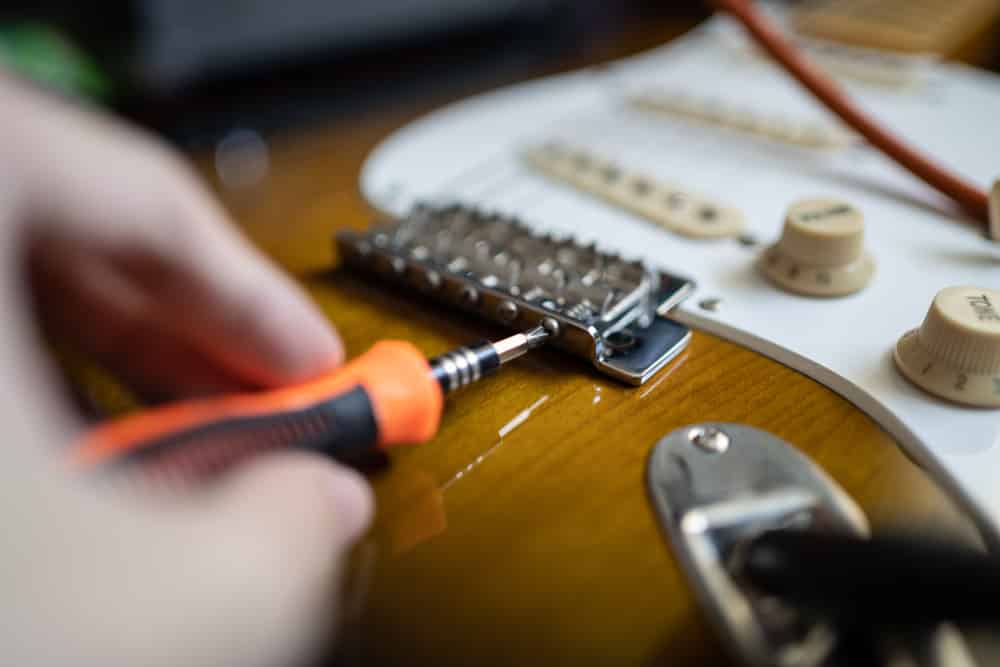
One cannot make the best music out of the guitar unless the guitar is kept in tune. As it is clear from the name, guitar intonation is concerned with the tone of your guitar strings. When the guitar is in-tune across the fretboard length, it means it is intonated.
An optimal tuning keeps the guitar in tune throughout the length of your fretboard. However, at times, the guitar can get out of tune and pose problems. There are many reasons that lead to the guitar intonation getting out of order. It doesn’t matter how well you have tuned the strings; some of them still sound off.
Most of the time, it’s poor manufacturing that causes bad intonation. In other cases, the frequent use of the ax makes it damaged and thus, results in bad intonation. Let’s look more into the causes of guitar intonation problems and try to find their solutions.
Guitar Intonation Problems
- Bridge Saddle Tilted Forward
Most of the guitar intonation problems are about the alignment problem with the bridge saddle. The angle between the bridge saddle and the bridge should either be straight or perpendicular. Due to some reasons, it can tilt forward or backward and hence, cause guitar intonation issues.
In addition to acoustic guitars, other guitars whose single bridge saddle is made of plastic or bone require that the saddle must fit tight in the slot. There should be no room for forwarding or backward tilting. Moreover, even when the saddle has to get in or out of the slot, it should take decent effort to do so.
Upon thorough research, it is found that the reason behind the tilting of the saddle is excessive stress which results from tightening the strings too hard. It is also caused when you use the wrong kind of strings.
Therefore, while you align the saddle, make sure it is perfectly aligned. The second thing that you need to keep in mind is that the strings must be of the right type.
- Guitar Strings Too Old
Setting intonation on guitar strings that are a few weeks or months old does not bring any fruitful results. Whenever you set intonation, the guitar strings should be brand new. The reason is that as time goes by, there is drifting in the intonation. It is clearly audible as you can hear out-if-tuneness across the fretboard.
If that’s the case, you won’t have to bring any adjustments to your intonation. You just have to change the strings. After you are done installing the new set of strings, stretch them thoroughly and then proceed to set your intonation. When the intonation is set, leave it alone until there is a change in your next string.
However, this may not solve the intonation problem. In that situation, you need to consider other solutions.
- Lack Of Accuracy In Guitar Tuners
When you have to do the tuning of open strings, you can rely on the standard guitar tuners, but they are not accurate enough to be used for setting guitar intonation. The accuracy of the strobe tuners must lie within +/- 0.1 cents. You need to check the specs of your tuners and see if there are actual accuracy numbers.
A mere description as ‘precise’ or ‘highly accurate’ is considered vague and should not be trusted. You must get your hands on another tuner for setting intonation.
- Incorrect Shape Of The String’s Nut Slot
Another factor that causes intonation issues is the incorrect filing of the nut slot. Make sure the contact of the string with the nut slot is in a good spot. The best way to deal with this problem is to take your guitar to a good technician because you cannot fix it yourself. If you are a novice, you should not try to troubleshoot yourself.
- The Nut Is Too High
Despite getting your intonation properly set at the 12th fret, you might notice the sharpness in the notes and chords in the lower positions. It is only possible when you have a high guitar nut.
Setting the nut height is one of the most important things to take care of whenever you are doing the setup. If you set the nut height to an incorrect setting, it can affect the entire operation.
- Bad Guitar Strings
Unfortunately, a few bad strings can ruin the intonation of the guitar. It is surprising how bad strings get into the market despite strict quality control methods and today’s technology. So, a stubborn string that fails to intonate should be replaced with another. This solution is effective most of the time.
If it doesn’t bring any results, find another replacement. There is a possibility that the problem might still be there. In that case, you might have ordered all the strings at once and hence, got a bad batch. Actually, the manufacturing of all the strings takes place in the same run.
If one has a problem, all of them have that very problem. It is recommended to use strings from a completely different manufacturer.
- Guitar Pickups Too High
The pickups of electric guitars are basically magnets, and that too, strong ones. When magnets are too close to the strings, they have the power to pull notes sharp. You can deal with one or two stubborn strings by lowering the pickups a bit. Check for the pole pieces of your pickup and see whether they are adjustable or not.
There is a chance that there is nothing wrong with the pickup as a whole, but it’s just one pole piece that is adjusted too close. That’s the one affecting the stubborn string. The distance between the pole pieces of the pickup and the string must be about 2mm-3mm.
Although the precise measurement depends on your guitar, the string should be fretted at the 22nd or 24th fret of the guitar. You can make adjustments as per your settings. Hence, you are prone to guitar intonation issues if the individual poles are set too close to the strings.
- Setting Intonation In The Wrong Position
Most guitarists are unaware of the fact that the setup adjustments like guitar intonation should be made in the playing position. It’s not just the guitar intonation that should not be set with the guitar flat on its back, but you should be careful about the string height and the truss rod as well.
Avoid setting them on the neck rest. The reason is that such settings are highly affected by gravity and other forces. Once you are done setting everything like this, things get ruined the minute you get your guitar upright.
As far as the electronic works and maintenance tasks are concerned, a guitar on its back is alright for them. But keep the guitar in playing position whenever you have to take measurements or do setup adjustments.
- Issues With Pressing The String
Whenever you have to set the intonation, the hardest thing to do is to press the string with the required force. The force exerted on the string at the 12th fret must be equivalent to the force you exert when playing naturally. It is a tough thing to take care of because you are not really mindful of the force when you are playing.
It doesn’t matter whether you play hard or soft; you have to meet this requirement at all costs if you want to get the intonation right. Make sure there is a match between the pressure you apply when setting the intonation and the pressure when you play normally.

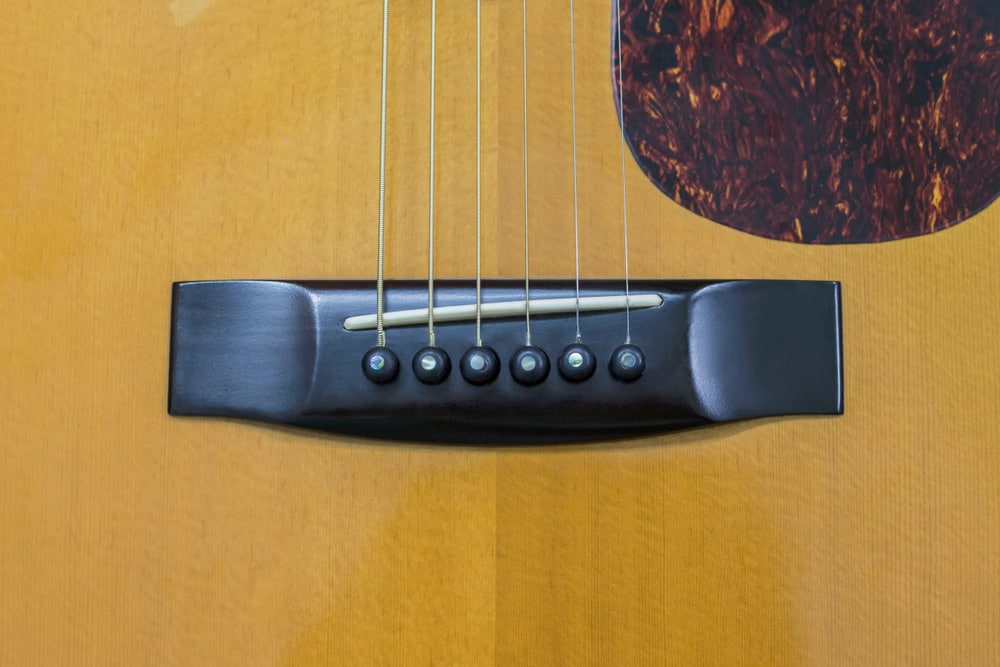
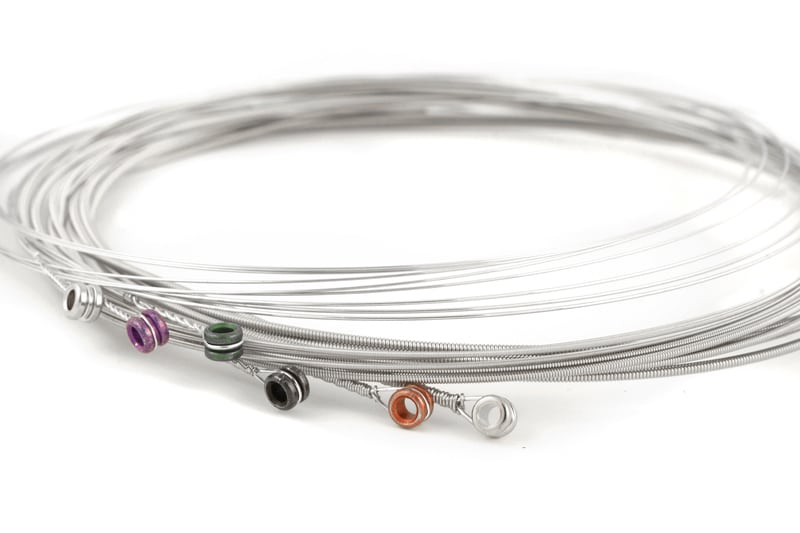
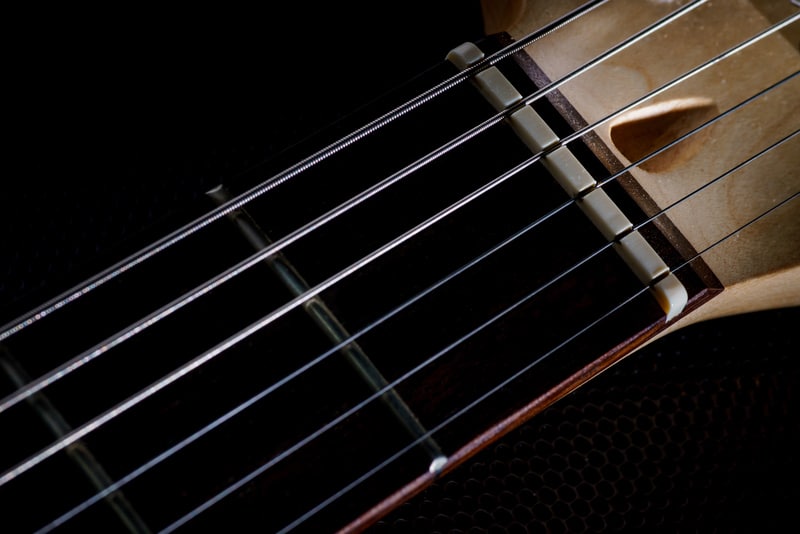
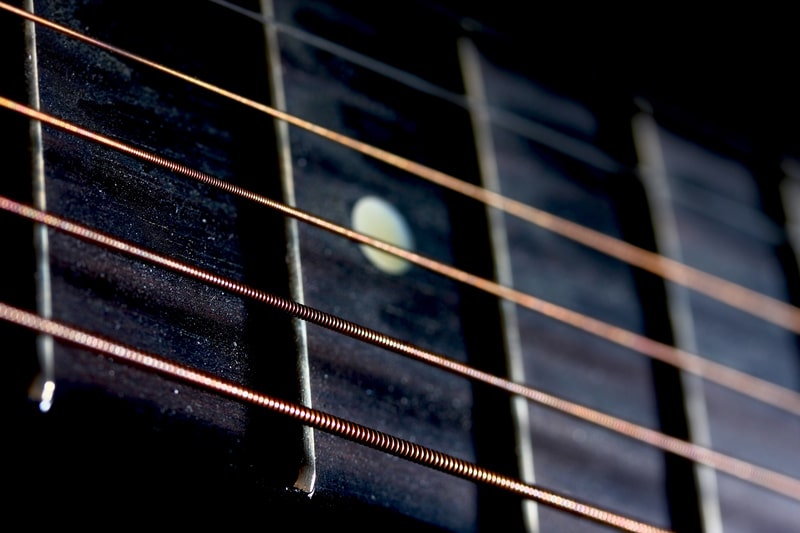


This is a great article, very thorough. I have a curious issue that I have yet to see addressed anywhere (and maybe it’s just my oddity to live with!), but my acoustic guitar shows very good intonation across five strings, played open, and fretted and harmonics on 12th, 7th, and 5th frets…except for the A string. It is dead on when played on 12th harmonic, but goes sharp (12+ cents) when fretted on the 12th. Okay, easy, adjust saddle to length the effective string length on the A — except that is is flat on the 7th and 5th (5-8 cents). Not sure what to do. I’ve tried different strings but the problem is still there.
Excellent article on the how-tos of correct intonation. Pressing the strings like you would normally play is good advice. Well done.